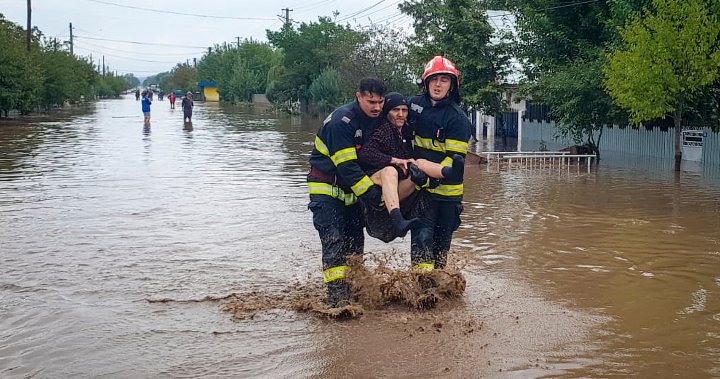Canada’s reliance on food banks has soared to a grim new milestone, according to data from Food Banks Canada.
The organization says it recorded more than two million visits in March 2024 – nearly double the monthly visits five years ago in March 2019, and six per cent above last year’s record-breaking figure.
Its annual survey of food bank use in Canada says rapid inflation, housing costs and insufficient social supports are driving poverty and food insecurity.
That includes outsized demand from renters, racialized groups, people with disabilities, newcomers to Canada and residents across the North, and a “deeply concerning” need among seniors and families with children.
Food Banks Canada CEO Kirstin Beardsley says food banks are being pushed to “the brink” and low-income Canadians need help immediately.

The report calls on governments to introduce measures that include rent assistance and a monthly payment to low-income groups to help off-set rent and food costs.

Get breaking National news
For news impacting Canada and around the world, sign up for breaking news alerts delivered directly to you when they happen.
“HungerCount 2024,” released Monday, says there were 2,059,636 visits to food banks across Canada in March 2024 — up six per cent from 2023 and 90 per cent from 2019.
It says one-third of food bank clients were children — a trend that’s held steady but in 2024 totalled nearly 700,000 monthly visits — while nearly one-in-five clients, or 18 per cent, were employed. Nearly 70 per cent lived in market rent housing.
One urgent recommendation is “a groceries and essentials benefit,” which Beardsley said could be achieved by rejigging the existing quarterly GST credit that goes to low-income Canadians.
“But we’re asking for it to be increased and made monthly so that it can be a more predictable payment to folks who are really in need,” said Beardsley.
“It’s really to offset those essential costs, the increases in rents that people are seeing, the increases in cost of essentials like food.”

In 2019, HungerCount recorded 1,086,280 monthly visits. There was no report in 2020 and monthly visits rose by 17 per cent to 1,272,580 in 2021, by 15 per cent to 1,465,721 in 2022 and by 32 per cent to 1,935,911 in 2023.
Although interest rates have dropped and inflation is slowing, Beardsley said that economic relief still depends on prices coming down and wages growing.
“People need money in their pockets today,” she said.
© 2024 The Canadian Press





